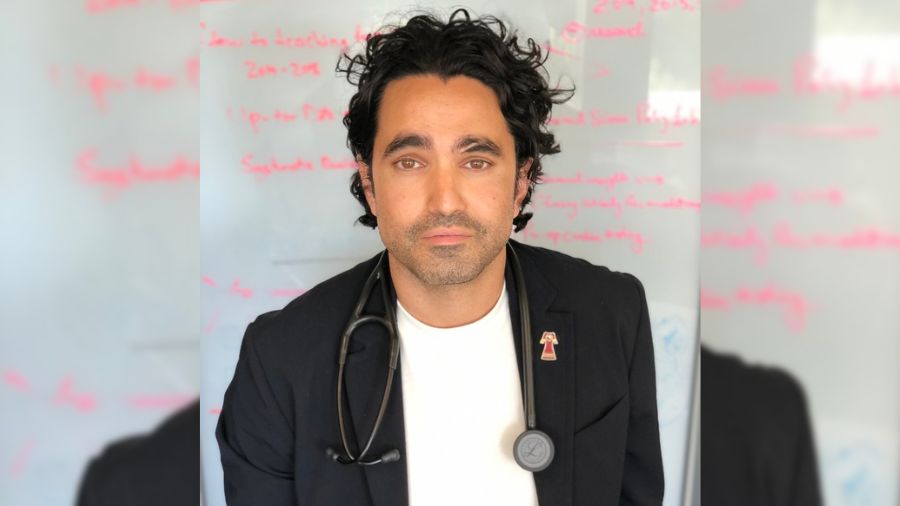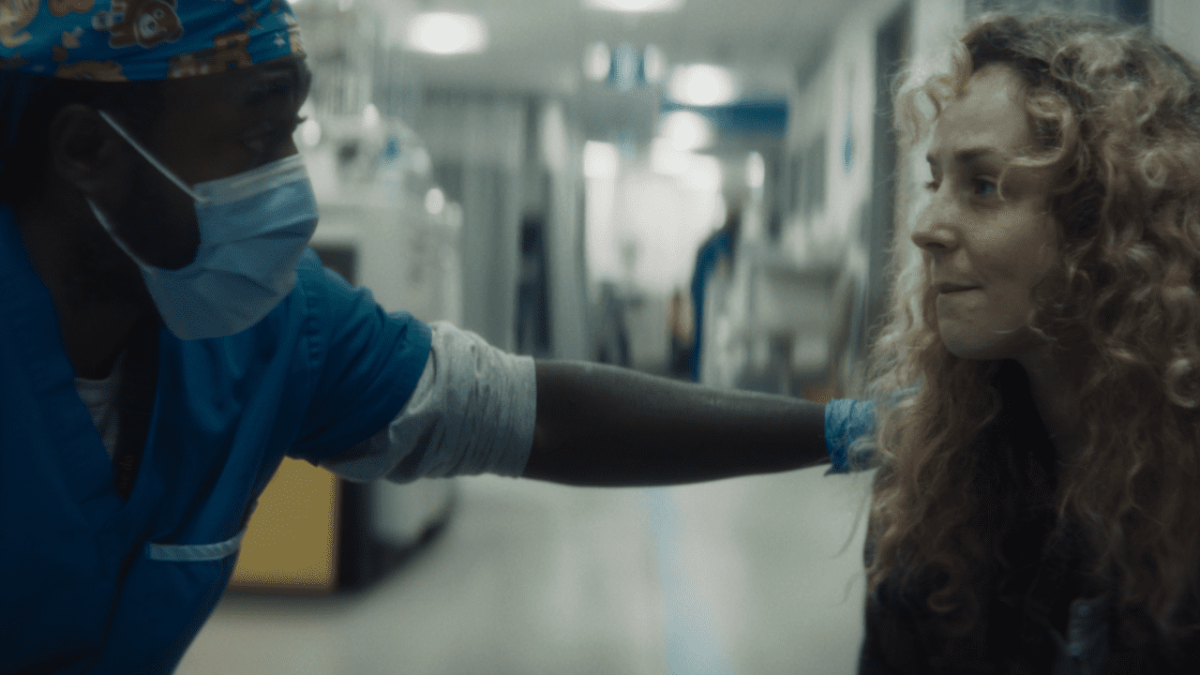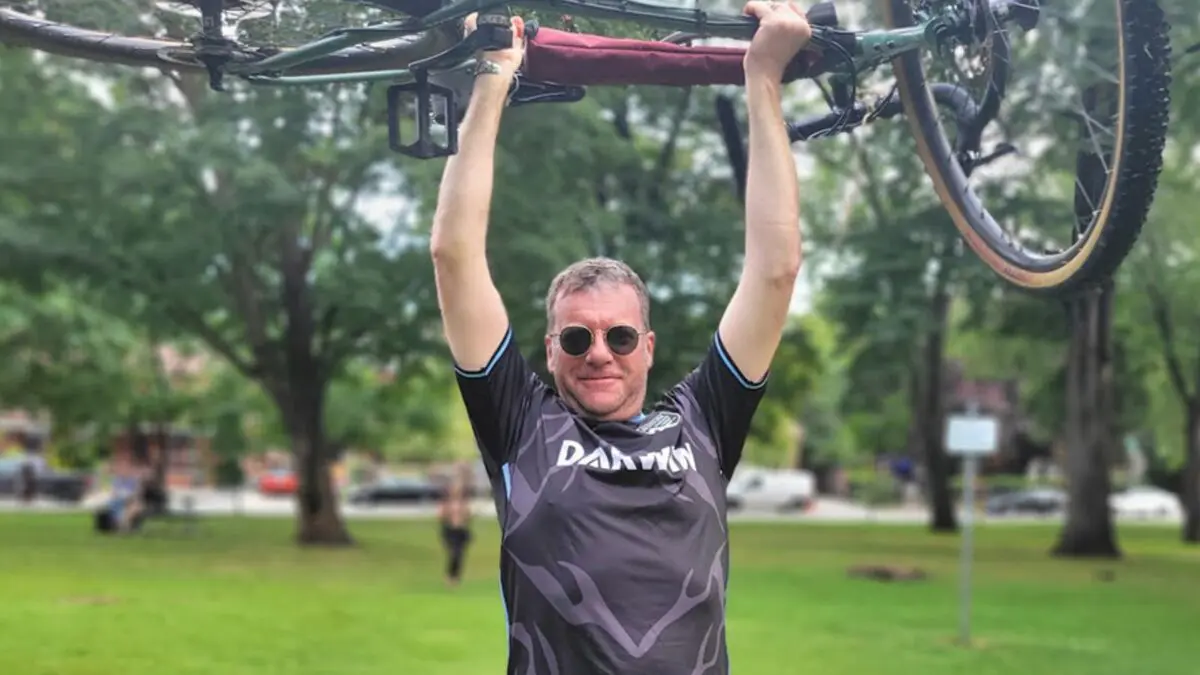University Health Network’s (UHN) Emergency Department (ED) received more than 120 virtual visits from across Ontario during its first month of running the Virtual Emergency Department. The Virtual ED’s secure online platform launched on December 14, 2020. It extends access to urgent care beyond the confines of the physical hospital and straight to patients, wherever they are located in the province, without the need to wait for hours in the Emergency Department.
The Virtual ED leverages video conferencing technology to safely enable “more efficient, fast and seamless care,” says Emergency physician Dr. Sameer Masood. Dr. Masood serves as the department’s Director of Quality, Safety and Innovation as well as the Lead for the Virtual Emergency Department.
“When we think of patient-centred care, we think of the right care for the right patient at the right time, but also at the right place,” he says. That right place can now be in the comfort and convenience of a patient’s own home.
“Patients walk into the ED and usually spend four to five hours waiting, often with lower acuity and relatively minor complaints,” he says. But virtually, “they’re able to access the ED from their home relatively quickly in a more efficient fashion.” At the same time, he adds, COVID-19 has complicated care because patients are unable to bring family members or friends into the Emergency Department due to safety precautions. “Through a virtual platform, we are able to connect with patients while also involving their caregivers and loved ones to provide additional context and information, enabling a more holistic picture of what the patient is experiencing.”
Before the COVID-19 pandemic, Toronto’s Emergency Departments struggled with hallway medicine and lacking enough physical space to serve a high volume of patients. There were approximately 15 million annual ED visits in Ontario in the 2018-19 fiscal year, which accounts for a 270 per cent increase over the preceding 10 years.
“With this virtual pathway, we’re able to expand our capacity for physicians and other healthcare practitioners to see patients,” says Dr. Masood. “Patients don’t have to be in the ED and that prevents overcrowding, reduces the risk of infection and makes the care process more efficient for the really sick patients who actually have to be in the Emergency Department for direct in-person care.”
People can book a virtual visit from a laptop, tablet or smartphone through UHN’s Emergency Department website between 10 a.m. and 8 p.m., from Monday to Friday. Time slots open the same day and are available from 2 p.m. to 9 p.m. The virtual conferencing system is designed for patients who have urgent but non-life threatening conditions.
In consultation with the patient, medical practitioners decide if the patient needs to come in to the physical Emergency Department, whether that be at UHN’s Toronto General or Toronto Western hospitals, or redirected to an ED at a hospital closest to where they live.
“From my experience in the first month, 80 per cent of patients don’t need to go into the ED physically and can be managed in the Virtual ED, and that can be through consultations or prescriptions or follow up care that can all be arranged virtually for them,” says Dr. Masood. Once the video consultation is complete, the patient receives a summary via the myUHN patient portal with any relevant follow-up information. Prescriptions can be sent by email or sent directly to the patient’s pharmacy.
“In the very small percentage of patients who inadvertently end up on a virtual care consultation, but really should be seen physically – for example, if they’re having a stroke or chest pain or concerns of a heart attack – we minimize the amount of time they spend on our platform and redirect them to the Emergency Department,” says Dr. Masood. “In some cases, the benefit of a virtual consultation before going in physically is that we’re able to expedite the patient’s care when they arrive and make sure there is pre-notification of the type of care they will need when they get to the Emergency Department, so their care journey is shorter and more efficient.”
In the next few weeks, virtual triage will be added to the online platform where, before seeing a physician, patients will initially connect with a health care practitioner skilled in triaging to better screen how suitable the platform is for their needs. For people without access to computers or mobile devices, there are plans to create a traditional phone line option to call in for access to the Virtual ED, as well as plans to establish community portals to connect with the online platform. Additionally, the Virtual ED has partnered with PHONE CONNECT, a UHN Emergency physician-led program that promotes health equity by distributing cell phones to patients without a phone number, allowing them to stay connected to health care practitioners, and now this includes being able to access the Virtual Emergency Department.
“The feedback has been excellent in terms of patient satisfaction and addressing their needs,” says Dr. Masood. “If we can do this in a convenient way, without them missing work and giving up their daily wages, or having to worry about child care or transport to the hospital, we’re making a lot of progress with bringing care closer to patients and making it as centred as possible to the patient’s core life and their own journey.”


